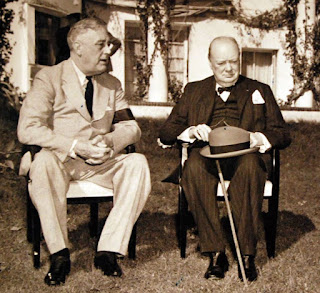 |
Would our political parties pass muster under the Fair Trading Act? |
WHAT IF OUR POLITICAL PARTIES were subject to the Fair Trading Act? What if they, like the nation’s businesses, were prohibited from misleading their consumers – i.e. the voters – about the nature, characteristics, suitability, or quantity of the products – i.e. the policies – on offer? Would they pass muster? Or would MBIE be sending them a letter?
Let’s begin with the smaller parties.
The unlikelihood of ever finding themselves in a position to implement their entire policy agenda significantly reduces the political incentives for small parties to obfuscate and mislead the voters.
Such honesty is both refreshing and alarming. Small parties like Te Pāti Māori, NZ First, Act, and the Greens are not, as a rule, reticent about their plans for the country. They rightly intuit that ideological candour attracts more serious interest than political evasiveness. Their preference is for the narrow temple over the broad church.
So, Te Pāti Māori is openly demanding
tino rangatiratanga – Māori sovereignty – and to hell with all the cavilling colonialists who complain. The party’s openly stated mission is to win all seven of the Māori seats, and to eliminate Labour’s decisive advantage,
vis-à-vis Te Pāti Māori, in the Party Vote. Its leaders neither expect, nor are they seeking, a majority of all the votes cast. Their plan is to win enough parliamentary seats to make the support of Te Pāti Māori indispensable to the formation of any future New Zealand government.
That this makes the party hell-scary to a very large number of Non-Māori voters doesn’t bother Te Pāti Māori. It is well aware that skewering the Pakeha is a winning feature, not a fatal bug, of the party’s pitch. To succeed electorally it needs the enthusiastic support of
rangatahi – and half-measures are repugnant to the young. Inspired by the uncompromising militancy of Hana-Rāwhiti Maipi-Clarke, they want it all, and they want it now.
In other words, Te Pāti Māori is offering exactly what it says on the tin.
NZ First and its leader, Winston Peters, are considerably more opaque.
Schooled by Rob Muldoon – New Zealand’s second-most-successful populist politician after Richard Seddon – Peters’ consistent electoral objective has been to reconstitute the angry coalition of farmers, small-business owners, and culturally-alienated working-class voters, that swept Muldoon to victory in 1975.
Like Muldoon, Peters expects his angry coalition to shoulder the task of restoring the social, economic and cultural equilibrium which he charges the Left with disrupting. Unlike Muldoon, however, Peters had to launch his populist crusades in a multi-party environment. The binary choice between himself and Bill Rowling, which Muldoon set before voters in 1975, has never been available to Peters and NZ First. In the post-MMP political marketplace, NZ First has always faced too many competitors.
In attempting to match the offers of its competitors, NZ First has tended to promise more on the tin than its serially monogamous attachments to one or other of the two main parties could possibly secure by way of coalition agreements. It’s the party’s fatal marketing flaw: promising more, delivering less.
Act has never been overly concerned about what gets printed on the party’s tin, or whether it matches its contents. Hardly surprising, given that Act’s key objective has always been to preserve and, if possible, extend, the top-down free-market revolution.
Act’s most successful leaders, Richard Prebble and David Seymour, have always understood that the best way to achieve the party’s objectives is to persuade National voters that the dominant party of the Right has gone soft on social and cultural issues (free speech, the Treaty of Waitangi, law and order) or, even worse, that it is losing focus on the key objectives of neoliberal economics.
‘Give us the votes, and we will keep National honest’, has always been Act’s best pitch. And, if right-wing voters read no further than that on the tin, then satisfaction with the product is likely to be high. To paraphrase the Rolling Stones: Act doesn’t always get what disgruntled right-wing voters want (Treaty Principles Bill) but it’s highly effective at getting what the Neoliberal Revolution needs (workplace reform).
And then there’s the Greens.
For post-scarcity parties like the Values Party (1972-89) and the Greens, it really isn’t stretching things too far to suggest that what’s written on the tin matters a whole lot more than what’s inside it. The purpose of such parties (or should that be “movements”) is to educate and inspire the electorate. Meaning that it’s not so much a matter of telling people what’s actually in your tin, as it is of stipulating what should be in everybody else’s.
To a large extent this explains why Green Party co-leader James Shaw became something of an embarrassment to his colleagues. He’d committed the unforgivable sin of actually achieving something by persuading the National Party to lend its support to his Climate Change Response (Zero Carbon) Amendment Bill. Shaw’s wheeling and dealing, his willingness to compromise, smacked uncomfortably of actually existing politics – as opposed to the “perfect world” politics favoured by the true believers.
The Greens’ unbridled idealism explains in large measure why the challenge of matching what’s written on the party’s tin with its actual contents, has become so daunting. Promising the voters diversity, equity and inclusion on the label is one thing; opening the can to reveal Bible Belt Bussy; is something else entirely!
And Labour? Does it comport with the expectations of the Fair Trading Act?
It’s tempting to say that it does. (Not least on account of the fact that the author once sat as the party’s industrial representative on Labour’s New Zealand Council.) Certainly, anyone turning up to a Labour Party conference will still encounter trade union affiliates, feminists, LGBTQI activists, Māori reps, and ambitious youth delegates. Policy remits will be debated. Elections held. The trappings of a progressive party dedicated to furthering the interests of the New Zealand working-class are all still in place.
Upon closer inspection, however, the label on Labour’s tin has the look of something carefully designed by an advertising agency to evoke a powerful nostalgic reaction. There’s a lovely photo of Mickey Savage, the typeface chosen has a staunch 1930s feel to it, and there are numerous references to Labour’s proud history of delivering “social justice” to “working people”.
But the compulsory list of ingredients, set in 8 point at the bottom of the label, reveals something a little different: Democratic Socialism: 1 percent; Social Justice: 10 percent; Decolonisation and Indigenisation: 15 percent; Gender Equity: 19 percent; Neoliberalism: 55 percent.
Don’t say you weren’t warned.
And National – New Zealand’s most successful political party? How closely does National’s content match its branding?
Let’s start with the party’s name, “National”. It was deliberately chosen by the party’s founders to indicate that, unlike Labour’s openly sectional commitment to working-class New Zealanders and their trade unions, the new party (born in 1936 out of the United and Reform parties) was committed to serving the whole nation – irrespective of its citizens’ class origins. That was a big, and an almost impossible, ask.
If they’d been serious: if the party had indeed been dedicated to the welfare and advancement of
all New Zealanders; i.e. to the “national” interest; then its policies would have built upon and extended Labour’s reforms. Not to put too fine a point upon it, a genuinely “national” party would have been as much “left” as it was “right”.
There will be many who, reading the above sentences, will cry: “Aha! That’s exactly what National is – ‘Labour Lite’!”
But, that would be an ideological, not an historical, response. Between 1936 and 1946 National was pledged to sweep away all of the social and industrial reforms of the First Labour Government. And even the party’s reluctant (albeit election-winning) acceptance of the welfare state in 1949 was tactical, rather than sincere. Forty-two years later, in 1991, National atoned for its earlier historical sins by laying waste to both the unions and the welfare state. What little of them remained standing, the party has been systematically dismantling ever since.
So, National isn’t a national
party. Still less is it a
nationalist party. A party infused with nationalist pride would be voluble in upholding the achievements of the New Zealand nation. It would sing the praises of its settlers, its city-builders, its progressive legislators, its engineers and scientists, its writers, poets, painters, and architects. A nationalist party would not sit mute as the New Zealand people’s achievements were disparaged as work of colonialist white supremacists.
No, National isn’t a nationalist party either.
If the policies promoted by the dominant party of the present coalition government came in a tin, and that tin was labelled “National”, then the only defence against a charge brought under the Fair Trading Act would be that after nearly 90 years of “representing everyone, farmers and businessmen alike” (thanks Gary McCormick) New Zealanders have come to accept that, in their country, the Right’s leading political party has only ever been notionally “national”.
We all know exactly what’s inside.
This essay was originally posted on the Interest.co.nz website on Monday, 21 April 2025.










